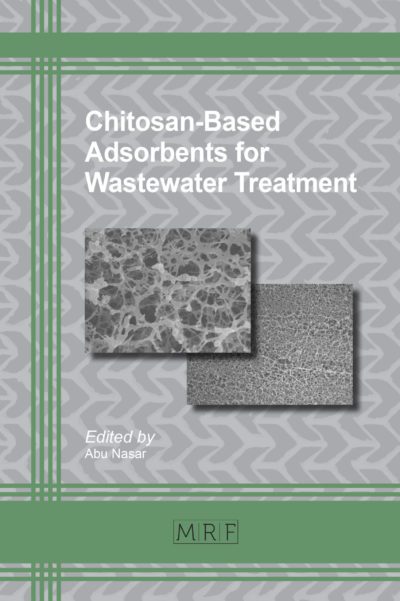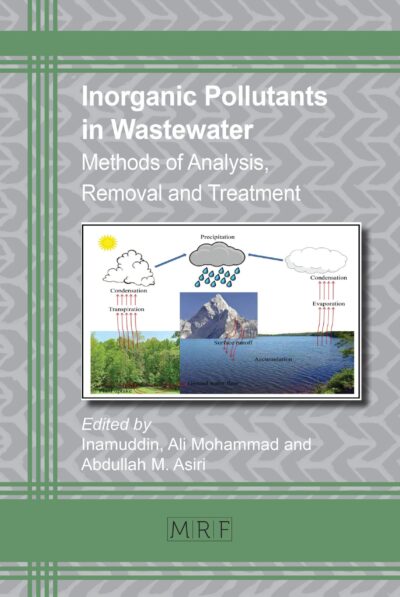Adsorption of hydrogen sulphide (H2S) using xerogel synthesized from palm kernel shell biochar
DEANA Qarizada, NOR MOHD Razif Noraini, AZIL Bahari Alias, HAMASA Kambakhsh, NURUL Syafiqah Ahmad Anuar
download PDFAbstract: Xerogel is a typical porous material with a large internal surface area, causing them to have significant gas adsorption. Adsorption performance was investigated to determine the potential contribution of xerogel to removing Hydrogen Sulphide (H2S) in this research. Adsorption is a well-known energy-efficient approach for removing acid gases at low temperatures. H2S gas harms human health, such as headaches, eye irritation, and loss of smell if exposed to a low concentration. Furthermore, the physical and chemical properties of the raw material and synthesized xerogel were evaluated by various techniques: Fourier Transform Infrared Spectroscopy (FTIR), thermogravimetric Analysis (TGA), and Scan Electron Microscopy (SEM). Results showed that the removal of H2S increased with increasing adsorbent mass from 3 to 12 g and decreased flow rate from 40 to 26 L/h. The maximum Adsorption capacity of Xerogel for H2S was 27.5 mg/g, and the surface area was 0.2686 m2/g. This research shows the significant potential of using adsorbent materials obtained from waste to absorb H2S.
Keywords
Palm Kernel Shell Biochar, Xerogel, Hydrogen sulphide, Adsorption
Published online 5/20/2023, 8 pages
Copyright © 2023 by the author(s)
Published under license by Materials Research Forum LLC., Millersville PA, USA
Citation: DEANA Qarizada, NOR MOHD Razif Noraini, AZIL Bahari Alias, HAMASA Kambakhsh, NURUL Syafiqah Ahmad Anuar, Adsorption of hydrogen sulphide (H2S) using xerogel synthesized from palm kernel shell biochar, Materials Research Proceedings, Vol. 29, pp 109-116, 2023
DOI: https://doi.org/10.21741/9781644902516-14
The article was published as article 14 of the book Sustainable Processes and Clean Energy Transition
![]() Content from this work may be used under the terms of the Creative Commons Attribution 3.0 license. Any further distribution of this work must maintain attribution to the author(s) and the title of the work, journal citation and DOI.
Content from this work may be used under the terms of the Creative Commons Attribution 3.0 license. Any further distribution of this work must maintain attribution to the author(s) and the title of the work, journal citation and DOI.
References
[1] “Hydrogen Sulfide – Overview | Occupational Safety and Health Administration,” 2017. https://www.osha.gov/hydrogen-sulfide (accessed Aug. 14, 2022).
[2] S. E. Mousavi, H. Pahlavanzadeh, M. Khani, H. A. Ebrahim, and A. Mozaffari, “Selective catalytic reduction of SO2 with methane for recovery of elemental sulfur over nickel alumina catalysts,” Reaction Kinetics, Mechanisms and Catalysis, vol. 124, no. 2, pp. 669–682, Aug. 2018, https://doi.org/10.1007/s11144-018- 1360-x
[3] J. H. Park, J. W. Ahn, K. H. Kim, and Y. S. Son, “Historic and futuristic review of electron beam technology for the treatment of SO2 and NOx in flue gas,” Chemical Engineering Journal, vol. 355. Elsevier B.V., pp. 351–366, Jan. 01, 2019. https://doi.org/10.1016/j.cej.2018.08.103
[4] W. S. Chai et al., “A review on conventional and novel materials towards heavy metal adsorption in wastewater treatment application,” Journal of Cleaner Production, vol. 296. Elsevier Ltd, May 10, 2021. https://doi.org/10.1016/j.jclepro.2021.126589
[5] N. K. Gupta, J. Bae, S. Baek, and K. S. Kim, “Sulfur dioxide gas adsorption over ZnO/Znbased metal-organic framework nanocomposites,” Colloids and Surfaces A: Physicochemical and Engineering Aspects, vol. 634, Feb. 2022, https://doi.org/10.1016/j.colsurfa.2021.128034
[6] M. Zhang et al., “Novel cationic polymer modified magnetic chitosan beads for efficient adsorption of heavy metals and dyes over a wide pH range,” International Journal of Biological Macromolecules, vol. 156, pp. 289– 301, Aug. 2020, https://doi.org/10.1016/j.ijbiomac.2020.04.020
[7] Yusuf IT, Babatunde YO, and Abdullah A, “Investigation On The Flexural Strength of Palm Kernel Shell Concrete for Structural Applications,” 2018.
[8] M. Yahayu, F. Z. Abas, S. E. Zulkifli, and F. N. Ani, “Utilization of Oil Palm Fiber and Palm Kernel Shell in Various Applications,” in Sustainable Technologies for the Management of Agricultural Wastes, Springer Singapore, 2018, pp. 45–56. https://doi.org/10.1007/978-981-10- 5062-6_4
[9] U. G. Eziefula, “Developments in utilization of agricultural and aquaculture by-products as aggregate in concrete–a review,” Environmental Technology Reviews, vol. 7, no. 1. Taylor and Francis Ltd., pp. 19–45, Jan. 01, 2018. https://doi.org/10.1080/21622515.2017.1423399.
[10] P. Shafigh, S. Salleh, H. Ghafari, and H. bin Mahmud, “Oil palm shell as an agricultural F. A . Idrus et al./MJCET Vol. X (X) (20XX) XX –XX 6 solid wastes in artificial lightweight aggregate concrete,” European Journal of Environmental and Civil Engineering, vol. 22, no. 2, pp. 165– 180, Feb. 2018, https://doi.org/10.1080/19648189.2016.1182084
[11] P. E. Imoisili, K. O. Ukoba, and T. C. Jen, “Green technology extraction and characterization of silica nanoparticles from palm kernel shell ash via sol-gel,” Journal of Materials Research and Technology, vol. 9, no. 1, pp. 307–313, Jan. 2020, https://doi.org/10.1016/j.jmrt.2019.10.059
[12] Anirban C., “List of Palm Oil Companies in Malaysia: 2018 Overview,” 2018. https://blog.bizvibe.com/blog/foodbeverages/list-of-palm-oil-companies-inmalaysia (accessed Aug. 14, 2022).
[13] G. Vijayakumar, R. Tamilarasan, and M. Dharmendirakumar, “Adsorption, Kinetic, Equilibrium and Thermodynamic studies on the removal of basic dye Rhodamine-B from aqueous solution by the use of natural adsorbent perlite,” J. Mater. Environ. Sci, vol. 3, no. 1, pp. 157–170, 2011.
[14] Kaya, G. G., & Deveci, H. (2020). Synergistic effects of silica aerogels / xerogels on properties of polymer composites : A review. Journal of Industrial and Engineering Chemistry, 89, 13– 27. https://doi.org/10.1016/j.jiec.2020.05.019
[15] Álvarez, S., Ribeiro, R. S., Gomes, H. T., Sotelo, J. L., & García, J. (2015). Synthesis of carbon xerogels and their application in adsorption studies of caffeine and diclofenac as emerging contaminants. Chemical Engineering Research and Design, 95, 229–238. https://doi.org/10.1016/j.cherd.2014.11.001
[16] Imoisili, P. E., Ukoba, K. O., & Jen, T. C. (2020). Green technology extraction and characterization of silica nanoparticles from palm kernel shell ash via sol-gel. Journal of Materials Research and Technology, 9(1), 307–313. https://doi.org/10.1016/j.jmrt.2019.10.059.
[17] Ma, Z., Chen, D., Gu, J., Bao, B., & Zhang, Q. (2015). Determination of pyrolysis characteristics and kinetics of palm kernel shell using TGA-FTIR and model-free integral methods. Energy Conversion and Management, 89, 251–259. https://doi.org/10.1016/j.enconman.2014.09.074
[18] Meri, N. H., Alias, A. B., Talib, N., Rashid, Z. A., Wan, W. A., & Karim Ghani, A. (2018). Effect of Chemical Washing Pre-treatment of Empty Fruit Bunch (EFB) biochar on Characterization of Hydrogel Biochar composite as Bioadsorbent. IOP Conference Series: Materials Science and Engineering, 358(1). https://doi.org/10.1088/1757- 899X/358/1/012018
[19] H. S. Choo, L. C. Lau, A. R. Mohamed, and K. T. Lee, “Hydrogen sulfide adsorption by alkaline impregnated coconut shell activated carbon,” J. Eng. Sci. Technol., vol. 8, no. 6, pp. 741–753, 2013.
[20] A. A. Abd Rahman*, A. B. Alias, N. N. Jaafar, M. A. Amir Hamzah, and W. A. W. A. Karim Ghani, “Adsorption of Hydrogen Sulphide by Commercialized Rice Husk Biochar (RHB) & Hydrogel Biochar Composite (RH-HBC),” Int. J. Recent Technol. Eng., vol. 8, no. 4, pp. 6864–6870, 2019, https://doi.org/10.35940/ijrte.d5207.118419














